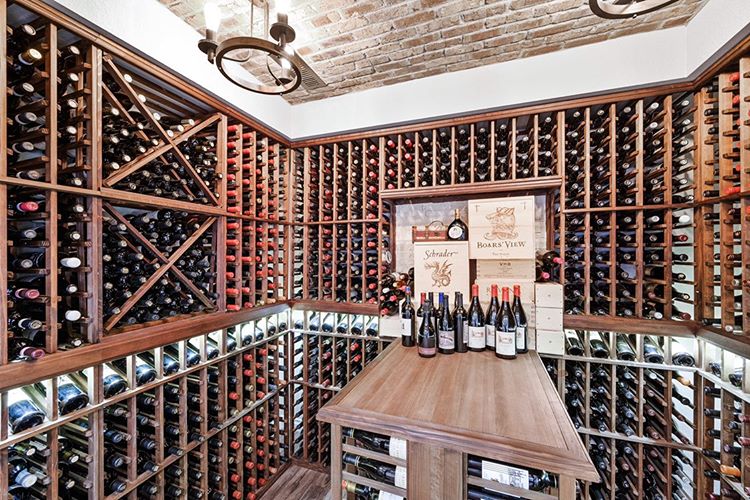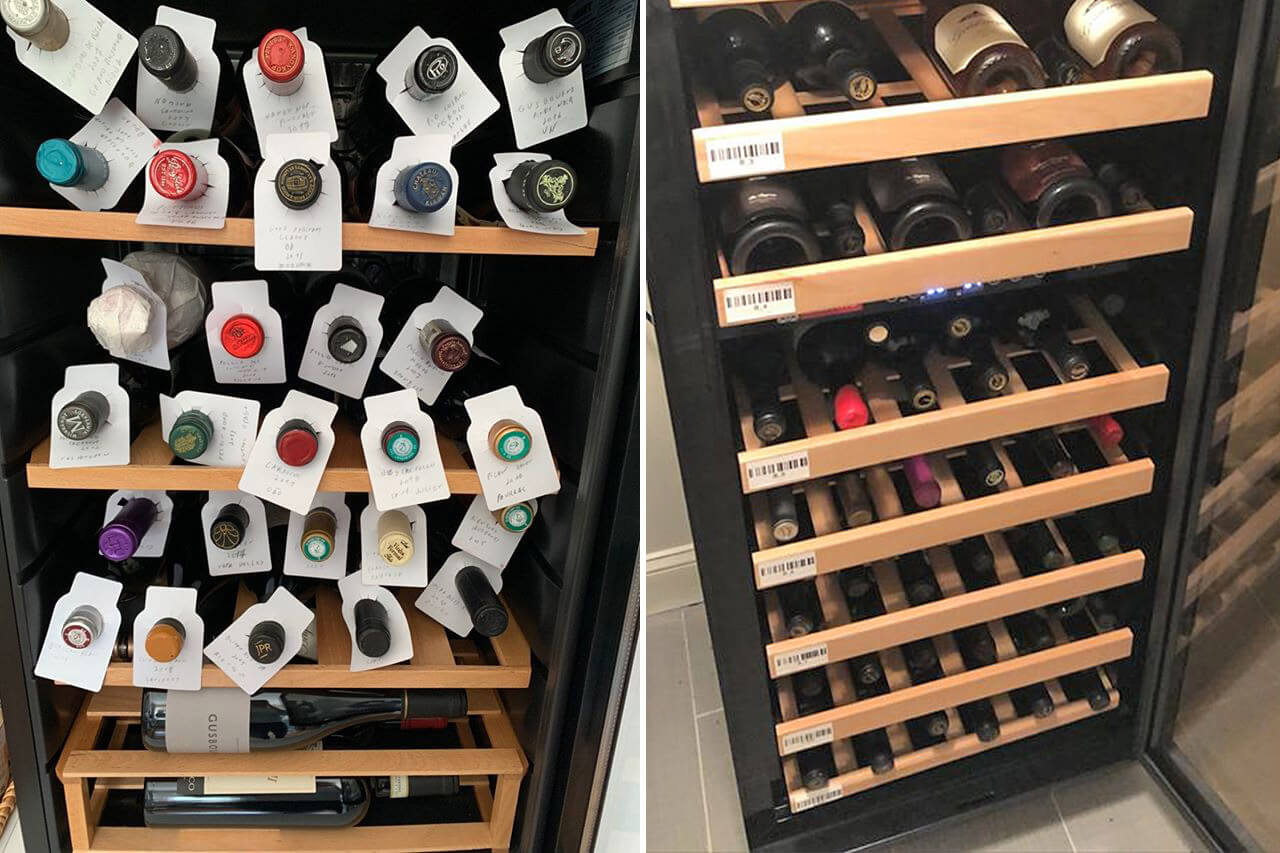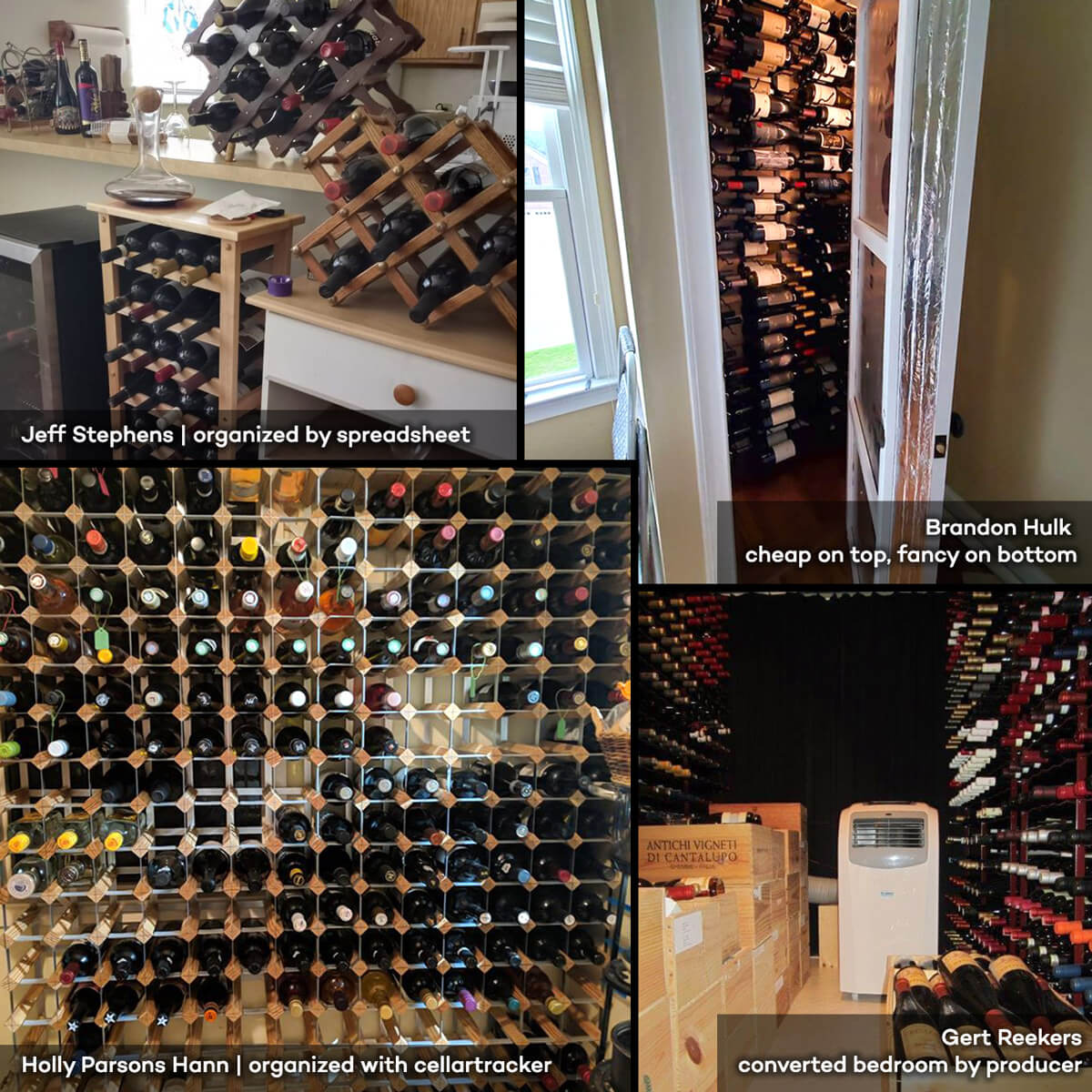What Makes a Good Wine Cellar? Here are tips on wine storage and methods to organize your wine cellar (or wine cooler!).
Whether you’re buying wine to hold onto for a handful of years, just starting a wine collection, or already have a well-curated wine cellar with 100’s of bottles, good wine storage is key.

Wine Cellaring 101
A well-organized wine collection will help you avoid opening bottles too soon or too late. Plus, they allow you to recognize the gaps in your wine collection, enabling you to make better wine buying decisions.
And let’s not forget that you’ll be able to more easily select wines for special occasions and find the wines you’re looking for faster.
Bottles and Corks
Any time a cork tops a wine bottle, the wine should be aged on its side. It allows the cork to come in contact with the wine, which keeps the cork moist. A dry cork starts to shrivel over time and let air inside. That isn’t good because oxidation rapidly destroys wine!
By the way, screw top wines cellar well too! And, they won’t need to store on their side.
You’ll find a lot of collectors purchase large format bottles. They do this because wines tend to remain more stable in sizes larger than a 750 ml bottle.

Temperature and Humidity
The proper temperature for storing wine is a constant 55-59°F (12–14°C) with 55-75% humidity.
Darkness is also crucial because ultraviolet rays from light can cause wine to spoil.
So, if you plan on aging wine for more than a year, then invest in a wine cooler, cellar, rent space at a refrigerated wine storage facility, or claim some real estate in your friend or family’s cellar!

What Ages Well in a Wine Cellar?
The majority of wines on the market today are produced for early consumption. If you want it to age well over several years, a wine should have some of the following characteristics:
- Wines with moderate to high acidity: This is crucial. Wines lose acidity over time, so acids need to start higher.
- Red wines with higher tannin: the polyphenols in tannins stabilize color and flavor.
- Look for balanced alcohol levels: alcohol is one of the primary catalysts that cause wine to break down. But, there is some debate on this given the age-ability of wines like Amarone della Valpolicella at 15%+ ABV.
- A note on sweetness: As you’ll see in a jam, sweetness acts as a preservative for wine. This is one reason why fine sweet wines age well.

Tips for Organizing Your Wine Cellar
No two wine cellars are alike. How you organize your wine cellar or cooler will depend on your wine collection size and personal preference.
Respect the grid.
A grid system will allow you to track and locate bottles with ease, regardless of your collection size. Give each column of wines in your collection a letter and each row a number, similar to an Excel spreadsheet. This will allow you to note the exact location of each bottle in your collection.
Valuables out of view.
Temptation’s going to be an issue! Place bottles that you intend to age for extended periods in the back of your wine cooler or on shelves out of reach. That’ll keep overexcited hands away from them. As well, put bottles that you intend to consume sooner in more accessible positions.

Organize by Style
For wine lovers just starting to build their collection, organizing your wines by style is a good option. Grouping wines by white, sparkling, red, rosé, and dessert styles is ideal if you only have a handful of wines from each category.
Organize by Price
If you buy wine randomly by whim and do not expect your cellar to get bigger than 200 or so bottles, try organizing by price. This is great if you’re just getting started with cellaring and are experimenting with many styles and regions to hone your tastes.
Organize by Variety
For medium-sized collections (200+ bottles of wine, depending on who you ask) that focus on new world producers organizing by variety works well.
You’ll know exactly which row(s) to go to in your wine cooler or wine cellar when you’re craving a bottle of Grenache or an aromatic Riesling. Categorize wine blends according to the dominant variety in the blend.
Or you could have a separate section for blends all together. Alternatively, you might decide to organize this sized wine collection by vintage.
Organize by Region
Once you are holding more than 200 bottles of wine, you have likely amassed wines from different regions around the world. At this point, you have the option to organize your wine collection by country and even further by region.
For example, all of your French wines may claim the top 3-4 rows of your wine cooler. Then you can occupy each row or a range of columns by a specific French region. Using an Excel spreadsheet to keep an inventory of this many bottles will also be easier and more efficient.
Organize by Producer
Many wine collectors join select winery clubs and buy an allocation of new releases each vintage. Over time, this collecting methodology can yield profitable results because you can sell these collections later in sets of three or more, or as a grouping of vintages.
For a producer-focused collection, you might first organize by region or variety, and then by producer.

Use a Wine Inventory App
Once you have around 100+ bottles of wine, it’s time to start using a wine inventory app such as cellartracker to manage your wine collection. Apps allow you to scan the barcodes of each wine bottle to manage and track your cellar more efficiently.
You’ll be able to easily track each vintage, know the recommended consume-by date for every bottle, read reviews, and track your own tasting notes on every wine.

Find a System That Works for Your Wine Cellar Situation
Remember: there is no “right way” to organize your wine cellar.
The method that works for you might evolve as your wine collection grows. So try whatever feels the best for you and your collection.
Whatever system you use, you’ll know you’ve chosen well with properly stored wine wine that you can find quickly.
Do you have a database for your wine collection? What works best for you?